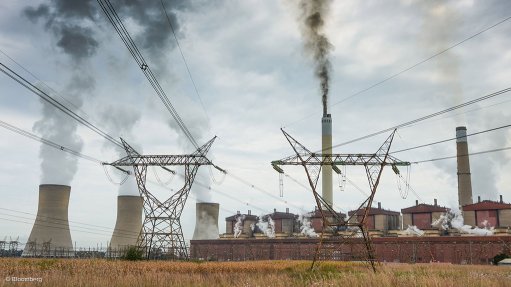Our hospitals
One of our unqualified journalists recently wrote about Charlotte Maxeke Hospital that it had been built during apartheid and that, at the time, there were no regulations regarding the construction of hospitals and other buildings and thus it has many defects that have to be repaired.
For this reason, wrote the journalist, Charlotte Maxeke will only fully reopen in 2023. Ah yes. The halcyon days when there were no building inspectors, and all contractors were pretty much at liberty to do what they wanted. In point of fact, the journalist is wrong; Charlotte Maxeke was built in the 1970s. There existed very stringent standards, which were enforced. The most feared people on any building site were the various inspectors from the departments of Community Services, Health and Public Works. Each inspector had his (they were all men) own theory about how things should be done and why, and there was nothing the professional team could do about it. The application of those standards by the inspectors was a nightmare. Say, for example, in a ward, the bed head trunking had two gas lines which were closer than the regulations stipulated; take them out and do it again. Not move one . . . oh no, too simple. Take them all out, install a set of lines which show crossovers, turns, bends, taps, T’s, splits . . . and the inspector would come and have a look.
Invariably, the contracts fell behind and nobody, save the main contractor with endless variation orders, made any money. Apart from government hospitals, there were several private hospitals, many of which had been started by various religious groups, including the Seventh Day Adventists, the Church of Scotland, the Church of the Swedish Mission, the Islamic faith; the Catholic Church, the Anglican Church and many others.
None of these hospitals had any set standards for construction. Thus, standards were established, bit by bit, until today there is a whole library of requirements, all promulgated in some form or another as government publications. A big event happened in the 1960s, the advent of medical aid societies. The idea was simple – all employees of an organisation paid a fixed fee every month to cover potential medical costs. Money was paid to doctors and hospitals as members incurred medical costs. Into this arena stepped the concept of the private hospital. An organisation would take over an existing private hospital run by a religious group, revamp it and offer services not offered before. The services would be swift, professional and efficient. The result was that the services would be charged to the medical aid society at a high rate; in turn, the medical aid society would raise membership fees. It was a great idea; the only problem was that the construction of the revamped hospitals was so swift that, while all the standards were observed and met, certain building defects crept in, which many private hospitals have today, such as many changes of floor levels for new piping and drainage, lifts in the wrong location, very poor acoustics (noises in wards can be heard everywhere); admin offices located wherever they can be fitted in, kitchens and medical sharing lifts. And so on.
All in all, these private hospitals do function well as hospitals – it’s just that the buildings are not ideal.
Now you will recall (if you have not fallen asleep) that this article started with Charlotte Maxeke Hospital. It was built from ground up and I know that every part of it was well thought out and built to specification. When I read that they are going to revamp it after a fire, I get worried. Why not just repair the damage? I suspect that it will just be redesigned in a way that is not necessary, but which will make a lot of people money. Oh, well. Let’s see what happens.
Article Enquiry
Email Article
Save Article
Feedback
To advertise email advertising@creamermedia.co.za or click here
Comments
Press Office
Announcements
What's On
Subscribe to improve your user experience...
Option 1 (equivalent of R125 a month):
Receive a weekly copy of Creamer Media's Engineering News & Mining Weekly magazine
(print copy for those in South Africa and e-magazine for those outside of South Africa)
Receive daily email newsletters
Access to full search results
Access archive of magazine back copies
Access to Projects in Progress
Access to ONE Research Report of your choice in PDF format
Option 2 (equivalent of R375 a month):
All benefits from Option 1
PLUS
Access to Creamer Media's Research Channel Africa for ALL Research Reports, in PDF format, on various industrial and mining sectors
including Electricity; Water; Energy Transition; Hydrogen; Roads, Rail and Ports; Coal; Gold; Platinum; Battery Metals; etc.
Already a subscriber?
Forgotten your password?
Receive weekly copy of Creamer Media's Engineering News & Mining Weekly magazine (print copy for those in South Africa and e-magazine for those outside of South Africa)
➕
Recieve daily email newsletters
➕
Access to full search results
➕
Access archive of magazine back copies
➕
Access to Projects in Progress
➕
Access to ONE Research Report of your choice in PDF format
RESEARCH CHANNEL AFRICA
R4500 (equivalent of R375 a month)
SUBSCRIBEAll benefits from Option 1
➕
Access to Creamer Media's Research Channel Africa for ALL Research Reports on various industrial and mining sectors, in PDF format, including on:
Electricity
➕
Water
➕
Energy Transition
➕
Hydrogen
➕
Roads, Rail and Ports
➕
Coal
➕
Gold
➕
Platinum
➕
Battery Metals
➕
etc.
Receive all benefits from Option 1 or Option 2 delivered to numerous people at your company
➕
Multiple User names and Passwords for simultaneous log-ins
➕
Intranet integration access to all in your organisation

















